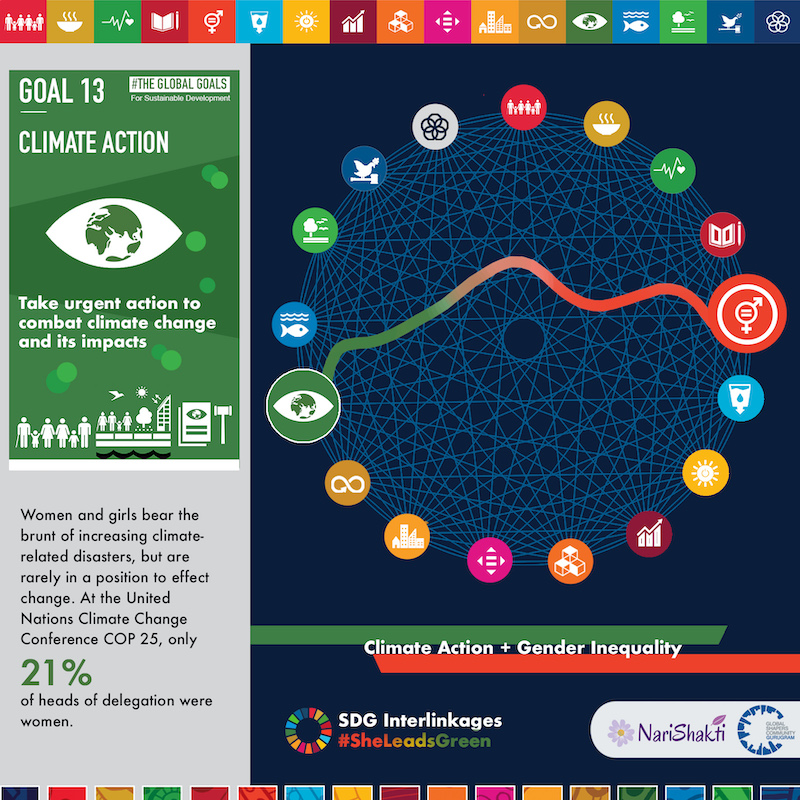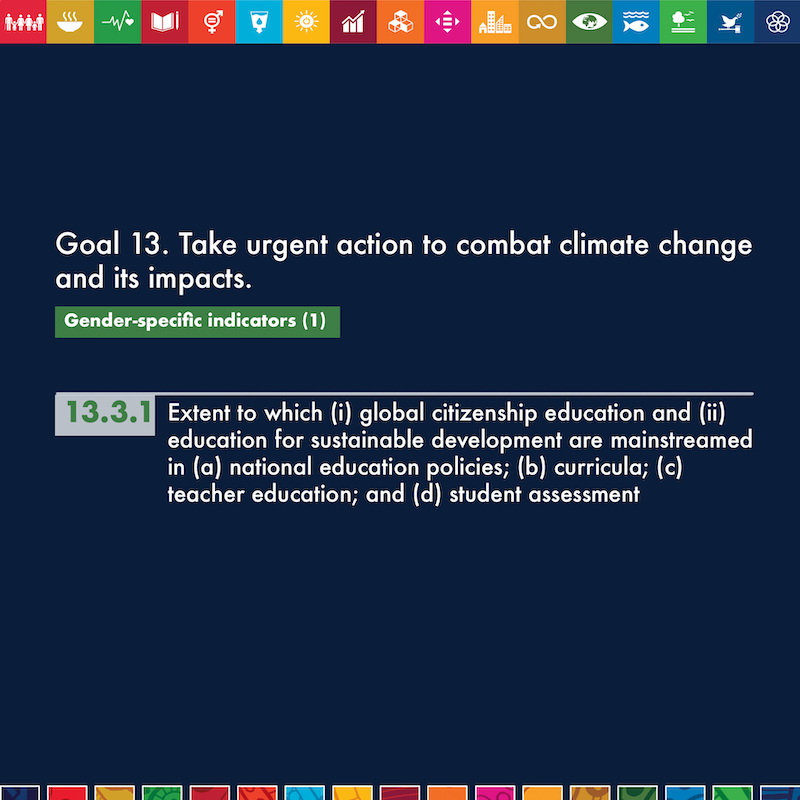
Gender parity for climate action (SDG 13)

Why do we need to look at climate action from a gender lens?
- Women are disproportionately burdened with household work, child and elderly care.
- Cultural and religious sanctions on respective gender roles also limit women’s ability to make instant decisions in disaster situations and limitations posed by the clothes they wear and their responsibilities in caring for children could hamper their mobility during emergencies.
- Gender equality is an important human right involving economic imperatives for promotion of equality in climate development policy.
- Women play a key role in management of natural resources as well as in other production activities at the household and community levels. They are in a strong position to contribute to adaptation of livelihoods to changing environmental condition.
- Their knowledge and capabilities should be utilised for climate change mitigation, disaster management and livelihood adaptation strategies.
How is climate action and gender-linked?
There are 5 targets and 8 indicators to achieve SDG 13. Only 1 out of 8 indicators are gender-specific.

- Women’s participation at the UN climate negotiations has improved in recent years, but women remain significantly under-represented.
- Climate change impacts men and women differently, primarily due to their relative roles and power relations which are gender differentiated. 80% of people displaced by climate change are women.
- Economic disparities and limited access to opportunities and productive resources also make women more vulnerable to climate change as women are often poorer, relatively less educated, and alienated from roles in political, community and household decision-making processes. More than 70% of people who died in the 2004 Asian tsunami were women.
What outcomes can we achieve in SDG 13 if we reach gender parity?
- Gender equality is central to economic development as well as environmental sustainability. In a similar way, increased participation of women is pivotal to the climate effort as women play a vital role in effectively mobilizing communities in the different phases of disaster management and could contribute hugely to disaster risk management and reduction.
- There are clear synergies between climate change and gender inequality, and as the group most affected by climate change, women need to be heard. Yet climate change responses are often ‘gender blind’, ignoring or even exacerbating existing inequalities. Research in Vietnam shows that women’s views are rarely considered in the design of gender-sensitive approaches to projects that aim to reduce emissions from deforestation and forest degradation (REDD+), which are more likely, therefore, to reflect male priorities.
References


